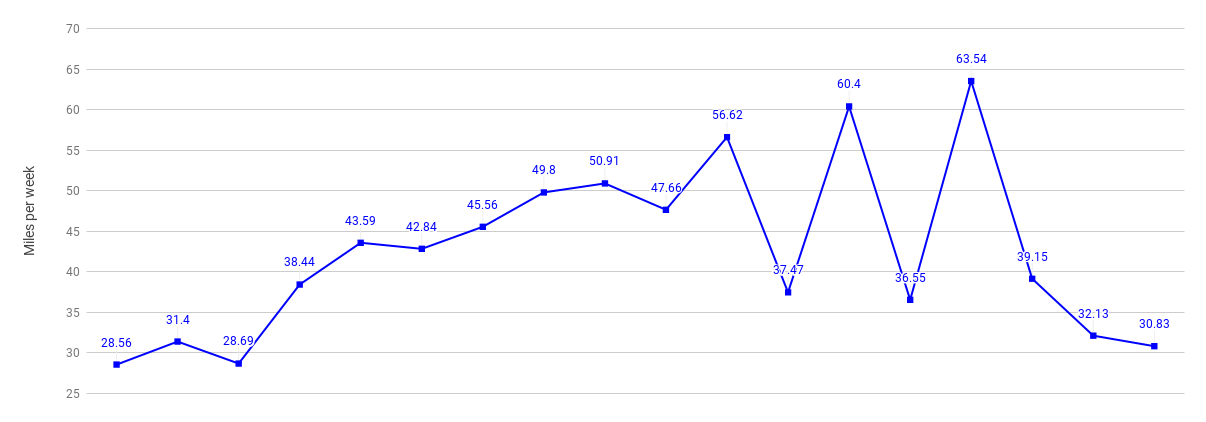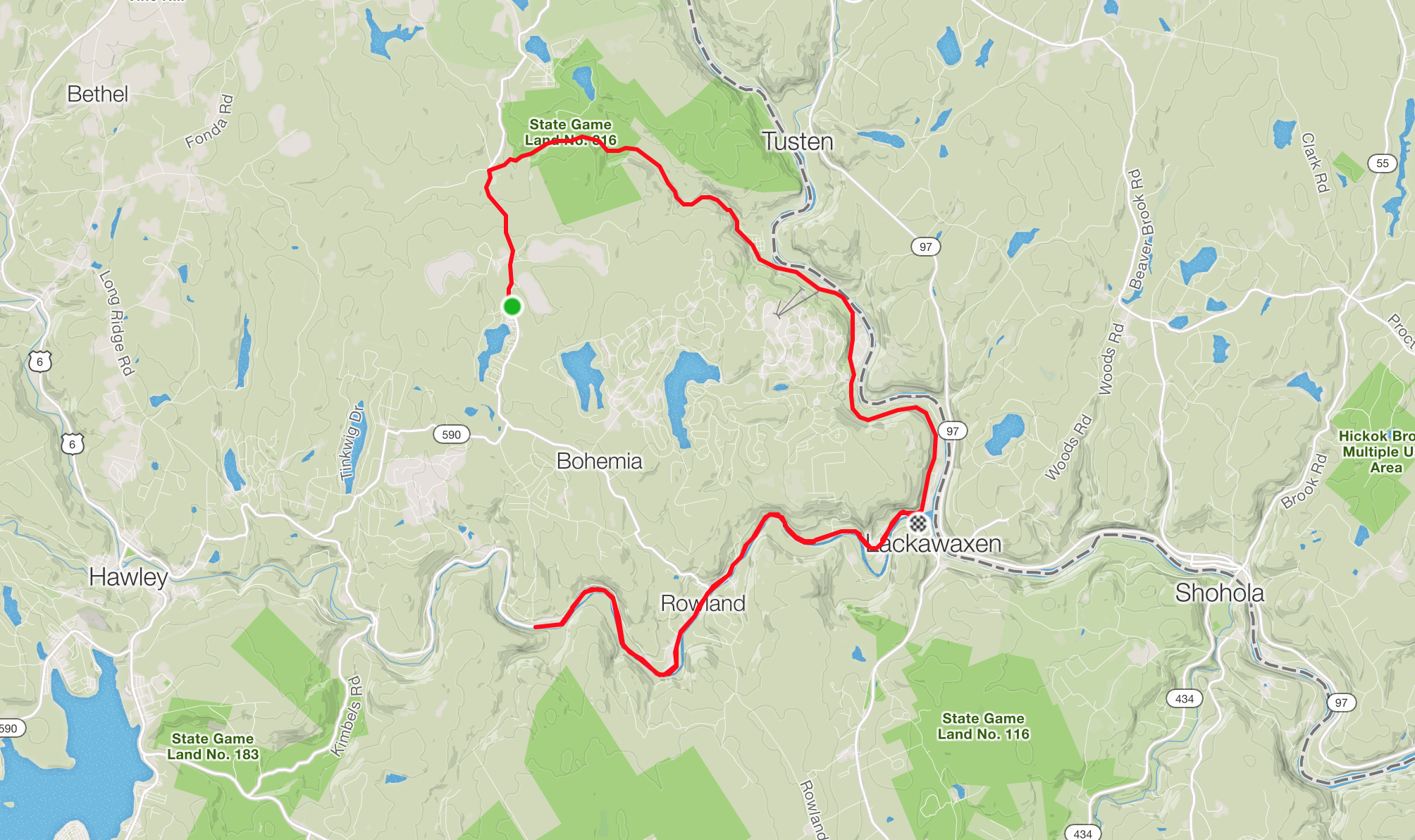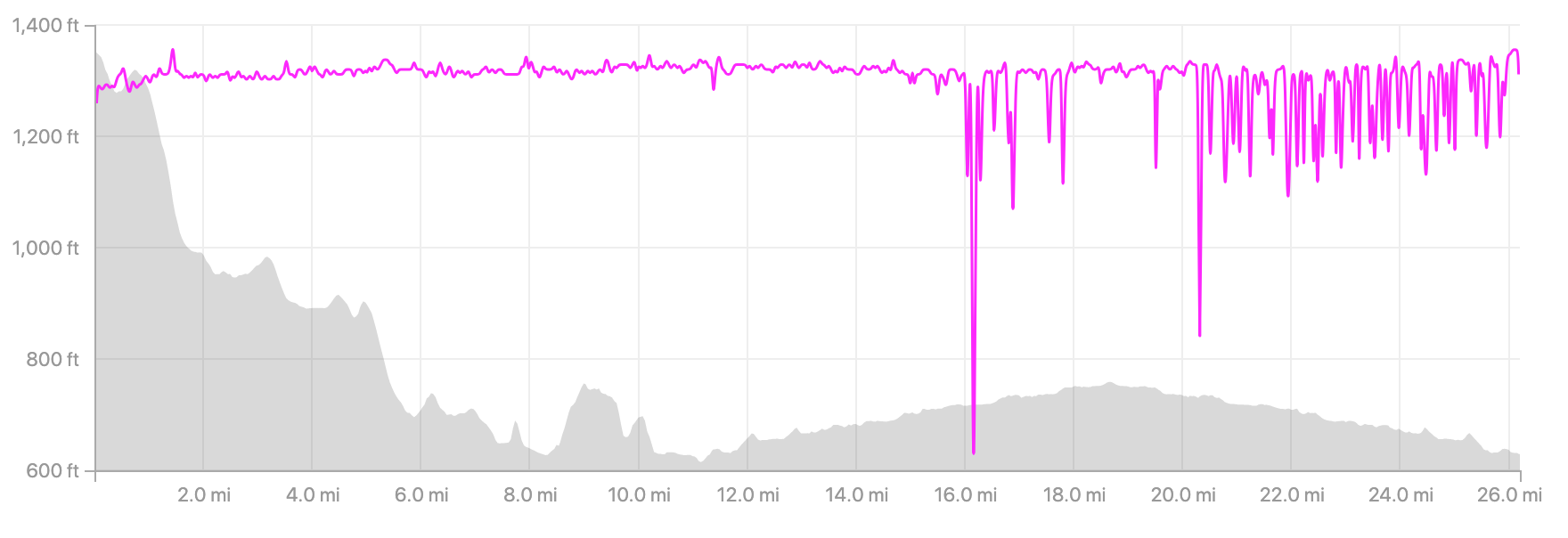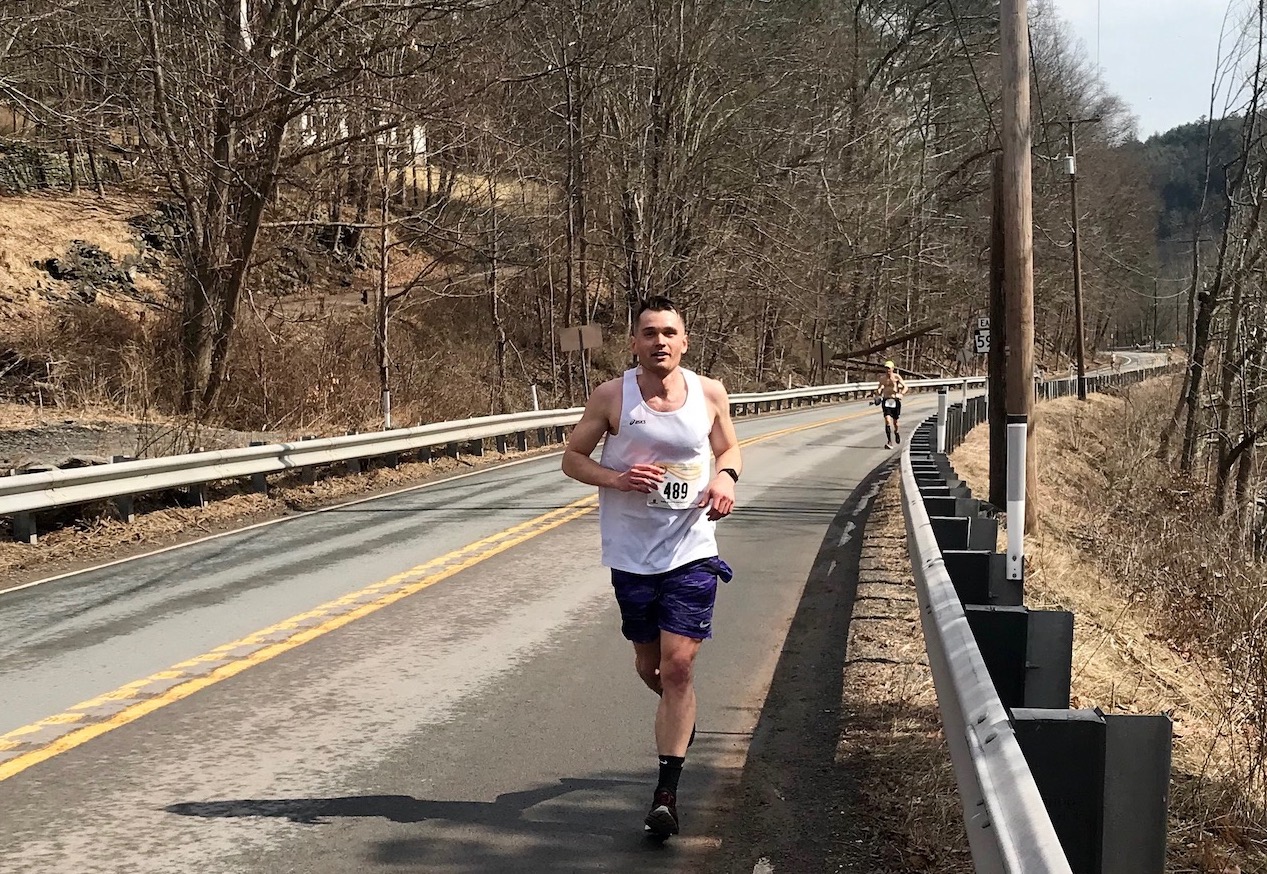Postmortem: Marathon Debut
Didn't go as planned, but I finished!This past Saturday I competed in my first full marathon. It was supposed to be a satisfying cap to 18 grueling weeks of training through the bitter winter. Instead, I had a humbling experience of pain and regret. This piece is meant to be a personal reflection covering my marathon training, the race itself, and how everything went so wrong.
Motivation
I have been hobby-jogging for several years to varying levels of success, holding a 5K PR of 18:42 and a 10 mile PR of 1:11:45. Nothing extraordinary but times I've tremendously improved on over time. Coming off the Philly Half Marathon in November, I was in fairly good running shape. It was the first race I had taken seriously, meaning I actually followed a plan for it. I winded up finishing in 1:33:29 (a 7:07 pace), exceeding my expectations. Despite being fatigued from the volume and frequency of running, I recognized that I was in great shape and was hungry for something bigger. Specifically a full marathon.
I selected the Two Rivers Marathon in Laxawaxen, PA because it was affordable, relatively local, and was scheduled far enough in the future to allow a 16 week training cycle.
Training
I followed Hal Higdon's Advanced I marathon training program. It's a 16 week program that is notorious for simplicity and volume-heavy weekends. Higdon's marathon programs are generally regarded to be beginner oriented (despite the word Advanced). The week-to-week schedule is consistent, medium-long run on Tuesday, speedwork on Thursday, rest on Friday, marathon-pace on Saturday and long run on Sunday. There is a gradual ramp-up that peaks with three high-mileage weeks featuring 20 mile long runs separated by two low-mileage weeks and finishes with a three week taper. On top of being straightforward, the plans are also free and atop Google search results, which supports beginner adoption.
Despite Higdon's plans being popular among novices, they're not optimized for generating peak performance. Critics argue the high-volume weekends are too high, putting runners at risk for injury. Furthermore, runs during the week are seen as being much too low in mileage, not providing enough training stimulus to prepare for 26.2 miles.

Despite knowing the shortcomings, I stuck with Higdon's plan. The thinking being, I'd be better off diligently following a sub-optimal plan than half-committing to a more optimal one.
Modifications
I modified Higdon's plan slightly to accommodate my life and the Two River's Marathon. Specifically:
- Frequently swapped Saturday and Sunday workouts - The key principle of Higdon's plan is a race-pace Saturday workout followed by a Sunday long run. I decided to swap these days for life convenience. I felt the training stimulus provided was similar in effect and simulated running marathon race pace on tired legs.
- Skipped Monday Workouts - My body had a tough time handling the increase in mileage, especially after back-to-back long sessions on the weekend. I allowed myself to take a break from the scheduled run and instead worked on hip strengthening and mobility. I would make up the miles lost by slightly increasing the mileage of the rest of my week workouts. Some runners claim that slow "recovery runs" provides enough rest but I've found a full day off to be much better recovery. YMMV.
- Additional "17th" week of training - Because of the scheduled marathon date, I needed to include an additional week. I effectively ran week 12's "recovery week" workout between weeks 10 and 11.
- Allowed myself to not run marathon race pace - My body was having trouble adjusting to the high mileage towards the middle of the program, so I allowed myself to run an easy pace on a scheduled marathon race pace workout if my body was feeling worn down.
Paces
Without going into too much detail, most of my mileage was at an easy pace in the range of 8:05-8:30 minutes per mile; long runs in the range of 8:15-8:50; tempo workouts between 7:00-7:30; interval workouts between 6:00-6:25.
These training paces were generally consistent over the course of training besides the intervals which improved modestly over time. Looking back, my long runs were perhaps a little too fast. But not a big deal in my opinion, I was generally relaxed and felt good after completing the 20-milers.
Goals
Marathon predictions are tricky. Many algorithms exist to predict an individual's expected finish time based off of previous finish times. The flaw to all of these predictors is the presumption that you're in marathon shape, which is a huge unknown if it's your first marathon. A general rule of thumb instructs you to double your half-marathon time and add 7-15 minutes.
Given the huge variability in these predictions, I set an A, B, and C goal:
- A: 3h:20m
- B: 3h:30m
- C: Don't let the wheels fall off. AVOID DISASTER!
With much emphasis on the last goal. If nothing else, I wanted to continuously run the entire 26.2 miles without catastrophe. This was more difficult than imagined. I would like to foreshadow that these goals seemed reasonable and achievable by most standards but were anything but. In retrospect, this still seems reasonable but doesn't allow room for error. As a first-time marathoner, I should have included a 15-20 second per mile buffer to account for weather, stomach, nerves, etc.
The Course
Road traffic was not restricted from passing through the course, leading to some confusing moments. There were times where I wanted to take the inside lane but felt unsafe doing so around a blind corner. I was even reluctant to cross the street in case there was traffic behind me. In fact, there was a particularly close call where I was nearly clipped by an opposing car.
The course featured a roller coaster of a 600' net decline over the first 11 miles featuring a nasty incline to conclude the cliff-fall. The remaining 15 miles consisted of 8.5 mile out-and-back that was deceivingly inclined.

You spend much of the race in beautiful woods along the serene Lackawaxen River. If nothing else, this course was more beautiful than I had hoped.
Race Plan
My intention was to run at a relatively conservative 7:30ish pace, manage my speed on the downhills, and open up the pace on the back half of the out-and-back.
During training, I had three 20 mile training runs on tired legs in the 8:05-8:30 per mile range and two 10 mile marathon race pace runs at around 7:05 per mile. It seemed reasonable to split the difference and estimate a race pace of around 7:25 with fresh legs.
But above all else, I repeatedly told myself I wouldn't go out too fast. I wouldn't let myself succumb to the most rookie of mistakes.
Execution
I felt good coming into race day off a three week taper. It was the first time in months that I didn't feel fatigued or achy. I kept my diet and routine consistent with previous weeks, but opting for carb-dense foods during the few days leading to race day.
The race started at 9:15 am on a cloudy morning. The temperature a mild 50°. Over the course of the race, the sun quickly appeared. This is critical because temperature increased by about 15° and the final 14 miles were generally unshaded.

During the first 10 miles, I felt decent. I wasn't out of breath or feeling much lactic acid accumulate in my legs. My primary issue was cramping and my stomach becoming upset. I had consumed two packs of Gatorade chewables up to this point and consumed lots of fluids to combat the heat and dehydration. I could feel my body struggle to handle all that I had consumed. But I kept going at my goal pace, hoping the cramping wouldn't get any worse.

It wasn't until mile 12 that I realized I was at risk of blowing up. I pulled back my level of exertion, attempting to let my body recover and maintain a sustainable pace. But by this time, it was too late.
Things went from bad to worse. I stopped to walk a few times around mile 16. My body was in severe pain from cramping, I was becoming dehydrated from the rising temperature and sun. My form quickly diminished to a trot. From that point forward, I knew I had made a huge mistake and there was no recovering from it.
Miles 16 to 26 were painful, grueling and downright demoralizing. Once I knew my goals were unachievable, disappointment soon set in. I never considered quitting though. I had come too far and trained too hard all winter to not finish. This is in contrast to several marathoners who drop out mid-race when having a subpar performance. In fact, many competitive runners see this as a noble decision. The thought being that you don't want to injure yourself for naught. I see this as quitter mentally. Anyway, I digress.
Though it has only been a couple of days since this race, I've seemed to block out most of the painful moments. At the conclusion of finishing I was disappointed in myself. I had been too confident in my abilities. I probably hadn't trained enough. I had made the biggest rookie mistake possible. Despite the "congratulations" I received for simply crossing the finish line, I had felt like a huge loser.
Click for vertical table orientation| 1 | 2 | 3 | 4 | 5 | 6 | 7 | 8 | 9 | 10 | 11 | 12 | 13 | 14 | 15 | 16 | 17 | 18 | 19 | 20 | 21 | 22 | 23 | 24 | 25 | 26 | 26.2 | Final |
|---|---|---|---|---|---|---|---|---|---|---|---|---|---|---|---|---|---|---|---|---|---|---|---|---|---|---|---|
| 7:18 | 6:52 | 7:28 | 7:22 | 7:26 | 7:10 | 7:31 | 7:31 | 7:58 | 7:29 | 7:31 | 7:28 | 7:40 | 7:56 | 8:19 | 9:40 | 11:38 | 10:10 | 9:16 | 9:35 | 10:37 | 11:15 | 11:43 | 11:19 | 10:31 | 10:40 | 2:29 | 3:51:52 |
What Went Wrong
Simply put, I went out too fast.
I was overconfident in thinking my training was sufficient for the performance I was anticipating, even as a newcomer. Your abilities as a distance runner require years of consistent, high-volume training. This is the reason why most distance runners don't begin to peak until their 30s or even 40s. Expecting myself to compete at such a high level after a single training cycle was naive.
I can't overstate enough how much marathon training is about high-volume running. Even peaking at 63.5 miles per week in my training cycle is, in retrospect, considered to be towards the low end of a performance-oriented marathon program. High performing marathoners are expected to run at least 70-80 miles per week and sometimes even 120+. Suddenly by contrast, 55 mile weeks don't seem like much.
While I don't blame my performance on the warm weather, it certainly didn't help. Up until race day I was routinely training in 20-40° weather. My body wasn't used to managing the 65° heat.

Reflections
Despite being disappointed in my performance and naive overconfidence, I walk (or hobble) away with several key lessons learned.
Respect the Distance
I will never again underestimate how long 26.2 miles is. The marathon requires a much different cerebral component than other races I've run. Sure, strategy and training play a big role, but self-restraint and discipline to adhere to your plan is in my opinion, largely understated. And that applies not only to the race itself but to the entire training cycle. Maintaining your commitment to high-mileage weeks is a much different beast than say a 10k or half marathon.
More Mileage
If I want to optimize my potential, I need to put more miles in, plain and simple. If you ever visit Letsrun or r/AdvancedRunning, you'll find plenty of threads about an individual's training being sufficient enough to qualify for Boston (sub 3:00 for men). Responses generally focus on the basics: training plans, years of racing experience, diet, etc. But by and far the biggest criticism is mileage. And I know now this is harped on for a reason.
As mentioned above, I was averaging somewhere around 45-63 miles per week from the mid-late stages of my training. It sure seemed a lot for a first-time marathoner, but when compared to individuals with similar goals, I was falling a little short. Ideally, I should be hitting as much mileage as my life and body permits but at least in the realm of 55-70 mpw. And not only higher milage weeks but more back-to-back training cycles, slowly building up strength and aerobic capacity over years.
Practice Fueling
This is a tricky one but I've learned that my body didn't handle the ingestion of so many carbs during the race. Though I consumed some calories during my long runs, it didn't come close to what I consumed during the race. I should include one or two long runs that simulate realistic fueling.
Final Reflections
But above all else, I've learned perspective. I came into the race not knowing just how difficult completing a marathon is, let alone doing so with high-performance. I have a new respect for marathoners of all levels, not just the ones that run sub-3. It is truly an admirable athletic feat.
Valuable lessons learned for the next.
Looking Ahead
I'm planning to redeem myself next month at Philadelphia's Broad Street Run 10 miler. I'm confident with that distance and it's frankly a fun race.
Otherwise, I'm honestly burned out from running. Though I'm in the best cardiovascular shape of my life, I feel fairly weak otherwise. Not to mention that the high mileage training wears down on you mentally. This was especially true during the winter most of my runs were in darkness where temperatures frequently dipped below 20°.
In the few days since the race, I've begun to "forgive myself". The lessons have been processed and I'm ready to move on. After all, running to me is about self-improvement and I think I've checked that box.
Onto the next one!